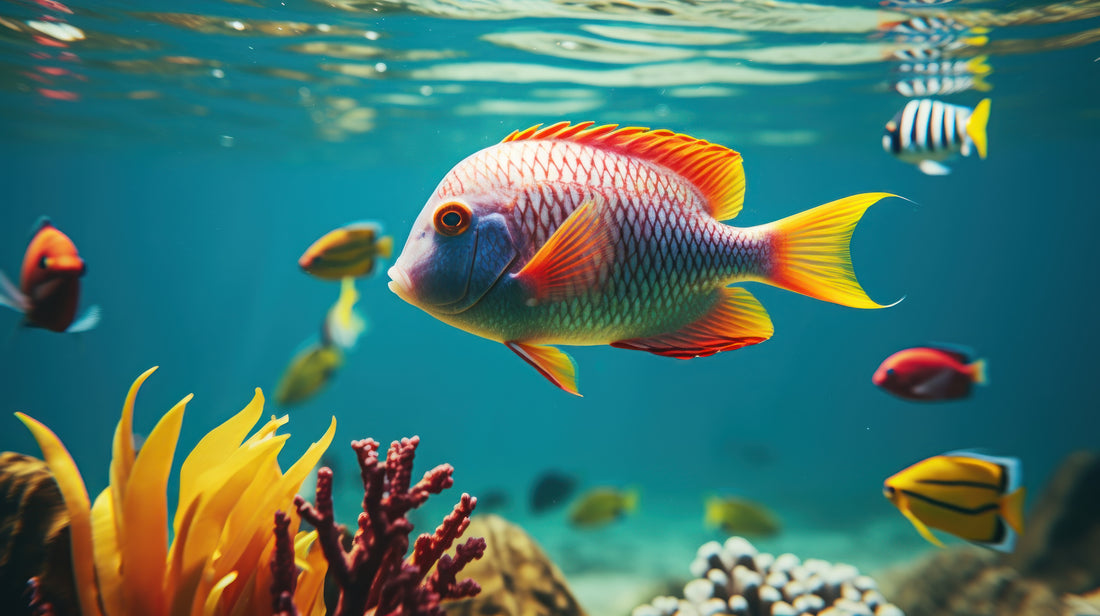
The Science of Seasonal Fish Behaviour
Understanding the seasonal behaviour of fish is essential for any aquarist or angler. Fish, like many animals, are deeply influenced by the changing seasons, and their behaviour adapts accordingly. Let's explore the fascinating science behind seasonal fish behaviour to gain a deeper understanding of the natural processes at play.
The Rhythms of Nature
Fish, whether in the wild or in an aquarium, are inextricably linked to the environment in which they live. The changing seasons are a significant environmental factor that impacts fish behaviour in various ways.
Temperature and Thermoregulation:
Temperature plays a crucial role in determining fish behaviour. Fish are ectothermic, meaning their body temperature is regulated by the surrounding environment. As the temperature fluctuates with theṣ seasons, fish respond by altering their activity levels and feeding patterns.
Reproduction and Spawning:
Many fish species exhibit specific reproductive behaviours tied to the seasons. For example, some fish may spawn during the spring when water temperatures and food availability are optimal for the survival of their offspring.
Feeding Behaviour:
Fish adjust their feeding behaviour according to seasonal changes in the availability of prey. In the spring and summer, when aquatic insects and small fish are abundant, fish may become more active hunters. In contrast, during the winter, they may become less active and conserve energy.
Migration Patterns:
Some fish species undertake remarkable migrations in response to seasonal cues. This can include moving to different depths in the water column or undertaking long journeys in search of optimal conditions for feeding or spawning.
Daylight and Photoperiod:
The length of daylight can trigger changes in fish behaviour. For example, many fish are more active during dawn and dusk, while others may be diurnal or nocturnal. The shift in daylight duration during different seasons can affect their daily rhythms.
Hormonal Changes:
Seasonal changes in fish behaviour are often linked to hormonal shifts. Hormones like melatonin, which respond to changes in photoperiod, can influence reproduction, growth, and metabolic rates.
The Role of Instinct and Genetics:
In addition to environmental factors, fish behaviour during different seasons is also shaped by instinct and genetics. Over countless generations, fish have developed specific behaviours and adaptations that help them survive and reproduce in their particular habitats and under specific seasonal conditions.
Migration Instincts:
Some fish species are hardwired to migrate to their ancestral spawning grounds during specific seasons. This behaviour is deeply ingrained and vital for the survival of the species.
Territorial Behaviour:
Certain fish species are territorial and may become more aggressive during the breeding season as they compete for mates and nesting sites.
Predatory Instincts:
Predatory fish may become more opportunistic during certain seasons when prey is more abundant, while they conserve energy during leaner times.
Social Hierarchies:
In species with social hierarchies, the behaviour of individual fish within the group can change seasonally. This can impact feeding order, mating, and other social interactions.
What is the relationship between fish behaviour and temperature?
Fish behaviour during different seasons is a complex interplay of environmental, genetic, and instinctual factors. Understanding the science behind these behaviours is not only fascinating but also critical for fish enthusiasts, anglers, and conservationists. It allows us to appreciate the intricate adaptations and survival strategies of these remarkable aquatic creatures.
At Intan, we are here to provide your fish with a balanced diet with our Premium Fish Feed. Our feed is tailored to meet the specific needs of each species. We truly believe every feed can spark positive change and create a future promoting quality, resilience, and well-being. We aim to serve the needs of hobbyists and breeders for the best quality of each species’ unique requirements. To know more About Us, check out our Instagram page.
